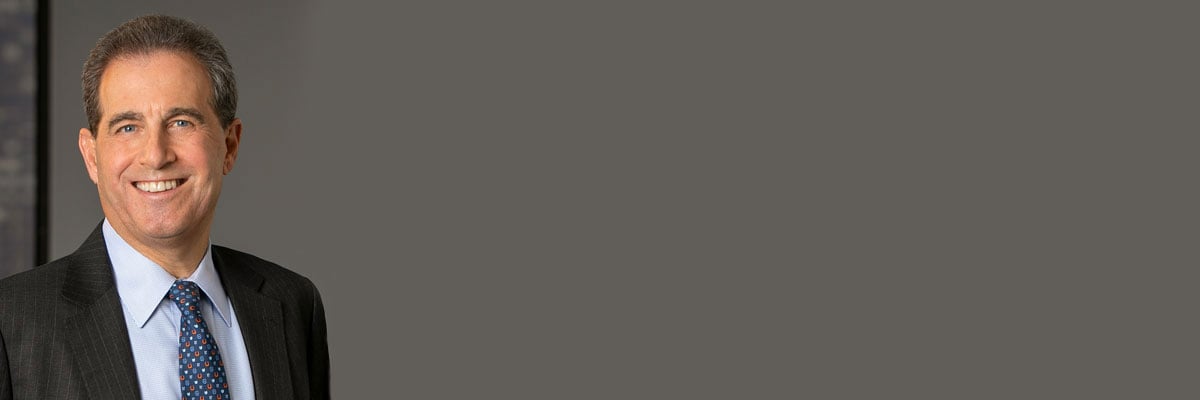A country mired in political football, Iran is still finding its feet again following years of tumult. With investors collectively holding their breath as the latest skirmish between the USA and Iran plays out, the country’s prospects for economic development are in a holding pattern. But behind the political theatre lies a country well placed to carve its own path to prosperity thanks to an enormous and highly educated population, robust economic and legal infrastructure, and a wealth of natural resources – all factors which, in the absence of political uncertainty, should be more than enticing to investors around the world.
Sanctions
Iran counts itself among a number of countries hit with targeted sanctions from the United States. At the heart of the current slate of sanctions is Iran’s insistence on pursuing a uranium enrichment programme, a move that some in the international community fear is serving as a precursor to the development of nuclear weapons. Negotiations between Iran, the US and the UN led to the limiting of Iran’s nuclear programme in exchange for reduced sanctions. But the so-called US-Iranian nuclear deal was famously collapsed by Donald Trump withdrawal of the United States from said deal and the reimposition of sanctions. The sanctions affect Iran’s automobile, gold and steel industries, as well as (most importantly) its oil industry.
While the sanctions, at least in the US, have been hailed as a political success and devastating to Iran’s economic capabilities, the reality is more nuanced. The chief effect of the sanctions it that the country’s oil output has declined, which has reduced the government’s revenues and, by extension, its ability to invest in much-needed infrastructure. Long touted as a ‘resistance economy’, Iran is undoubtedly feeling the pressure, though one only has to look as far as the other targets of the United States’ financial wrath – the likes of Venezuela – to see how much worse things could be. Still, the World Bank has ranked Iran towards the bottom of its projected economic growth rankings for 2019 – only being saved from the very bottom by Nicaragua – and the price of basic items has, in some cases, tripled in the past year, providing further cause for investor anxiety, as social discord can only increase under such conditions.
The effect of the older sanctions has been to stymie the overall development of Iran, at a time when other emerging markets have been able to pull ahead and enter a class of their own. Majid Sadjadi, founder and CEO of Iran investment firm Rostam Capital, compares Iran to another one-time emerging market: ‘China is celebrating its 70th year now, but until 20 years ago they were way behind the Iranian economy if you look at it as an investment destination. For Iran, it’s just a question of getting it done and accelerating it.’
The degree to which these latest sanctions have affected the Iranian economy depends on who is asked, but the indefinite nature of the sanctions and an apparent diplomatic stalemate between Iran and the US has investors holding their breath, awaiting some signs that the country is past the threat of further instability or worse, war.
‘Clearly, it’s a difficult market,’ says Richard Adley, CEO of First Frontier Capital. ‘There’s no way of getting around it – the sanctions aren’t making things any easier and yes people are turning away, but equally, that doesn’t mean there aren’t opportunities – companies still need financing, and the economy still goes on. Yes the currency is devalued, but the reality is it has stabilised and, for the moment, it isn’t getting worse. And it’s probably not going to get worse – it’s just a matter of how quickly it’s going to get better.’
Not Like Other Economies
Like many economies in the region, Iran’s is largely built on oil and gas production – but the specifics of its construction mean that Iran may be better positioned than its close neighbours to take advantage when the doors to foreign investment finally open fully.
‘People always think of the country as oil-dependent, but around 70% of the GDP is non-hydrocarbon,’ explains Sadjadi. ‘The majority of the government revenues are hydrocarbon, so there’s always confusion. But it is a different economy to many of the others in the region – hydrocarbon is a minority part of it.’
It is this economic fact that has saved Iran from the fate of Venezuela, which is crumbling under US sanctions on oil due to the government’s reliance on oil exports for revenue.
Another factor that distinguishes Iran from past examples of emerging markets in the region, or current examples of emerging markets around the world, is that the country enjoyed a bustling economy long before the scandal and political animosity that has been present from the 70s onwards. Unlike others, there are decades of pre-established processes and infrastructure – physical and otherwise – to lean on.
‘Iran isn’t an emerging market – it’s a re-emerging market,’ says Sadjadi. ‘When we worked China, or countries in the former Soviet Bloc, you had to wait for industrial and economic infrastructure to be developed before you could do much. All of those exist in Iran – they just need to be brought up to international standards.’
‘You have foreign investor protections – legally, you’re very well protected,’ adds Adley. ‘It’s an economy and a country that is re-emerging, rather than emerging. It has had previous good relationships and development that has gone on, they have still maintained good relationships with parts of Asia and Russia.’
‘Some of the technology and technical infrastructure may be creaking at the seams or underinvested, but that’s more of a bandwidth problem rather than a functional, basic operational capacity.’
‘There are many enablers for the Iranian economy,’ argues Sadjadi. ‘It has 10% of the world’s crude oil reserves, along with gold, platinum, LNG – and all of this needs to be extracted efficiently. Iran had state-of-the-art technology 30 years ago, but very little new investment has been able go into them because of the sanctions.’
It’s the holding pattern, imposed by the aforementioned sanctions and general uncertainty, which functions, in large part, as the true ceiling to Iran’s development in the coming years. While the UAE and Saudi Arabia are thinking about large-scale economic diversification and modernisation initiatives, Iran is still waiting to see how its complex diplomatic problems shake out before uniting behind a comprehensive vision for the future.
‘It’s very hard for them to have a long-term vision because they don’t even know where they are day-to-day or week-to-week. So you don’t have that big clear picture,’ says Adley.
Human Capital
This uncertainty has meant that Iran has not enjoyed the influx of wealth and human capital into the economy that other Middle Eastern nations have; a factor that is economically limiting in and of itself. But, unlike certain other economies, Iran has a population of over 80 million, many of whom are highly educated – so there is already plenty for business to leverage off.
‘It’s a real economy,’ explains Adley. ‘80 million people with real domestic people – that 80 million is not like the UAE or Qatar, where it’s made up of expats. It’s a real, domestic, functioning economy. So there’s less of that need to follow the Saudiisation or Emiratisation that’s going on, because the nature of the demographics isn’t the same… it’s a real economy that functions and it has real exports and real production other than the hydrocarbon.’
‘The country needs to preserve its human capital,’ says Sadjadi. ‘It is one of the highest educated rates in the world, and much of that is in the science and tech areas. Ordinarily, you would need to wait a generation to produce that in a newly emerging economy, as opposed to Iran, which is a re-emerging one.’
Local human capital notwithstanding, there are things to be said for fostering a multicultural, international workforce.
‘The whole international business environment, it brings a lot of new learning,’ explains Mozhdeh Pourmand, managing partner at Andisheh Consultancy Firm in Tehran. ‘It’s not only technology – it’s the know-how: how to work, how to improve, how to develop. I have seen the difference – especially now I’m working with a state-owned holding and at the same time working with multinational companies – and I can see the difference in every inch of the business they are doing: the efficiency, the integrity, the transparency of the work. So as a personal wish, I think that would be a door for improving the whole country’s economy.’
Under Sanction
In Iran, having a permanent in-house counsel isn’t common. Outside of the large, state-owned enterprises, many businesses choose to rely solely on external advice, or even make use of external in-house specialised advisory services. Mozhdeh Pourmand is the managing director at Andisheh Consultancy Firm, which provides external, in-house legal services.
‘In most companies, they do not have very much in the way of a legal department. The contract is usually handled by the procurement department, so unless they face really big issues, they do not have that intention to go to a lawyer. But, there is an exception – the state-owned companies, they do have an in-house department, all of them,’ she says.
‘I think it is because of the size of the businesses and the nature of the work they are handling. They’ve got the budget from the state and there are a lot of internal audits that come with that – one of the requirements for them is to have a legal department to be able to respond and cooperate with the auditing.’
Given the kinds of issues likely to be faced by companies operating in Iran, this may be surprising – especially given the increasing extra-territorial reach of anti-corruption, anti-bribery and data protection regulations, as well as the much-needed modernisation of legal infrastructure that is somewhat underway, but expected to boom if sanctions are lifted and Iran’s economy begins to improve.
‘There are increasing regulations in each sector, but that has a cost – so you have to see an economic benefit to that cost,’ says Sadjadi.
‘That’s what is being held up. Everyone knows it has to be done – the regulatory infrastructure has been out of touch for the past 30 years compared with international ones – so there’s a lot of catching up to do on the legal structures enabling trade, foreign ownership, and various things like protection of foreign investments.’
Given all of this, an underdeveloped in-house ecosystem is not ideal. Pourmand sees a shift on the horizon, however, one which she hopes will see increasingly educated and innovative law graduates push the profession in Iran forward.
‘One thing that comes first to my attention is the change in the fresh graduates becoming junior lawyers. In contrast with my time, many fresh graduates know English, so they try to use English and Arabic together with use of technology to access new concepts of law and, usually, these new legal concepts are linked to the business,’ she says.
‘What I am hoping and what I am seeing is that, maybe in the next ten years, we have more attorneys whose state of mind is more similar to the European lawyers or even others around our region – not that old-fashioned litigator working solo and not pursuing any self-improvement.’
Still, as with much of the business world in Iran, such change is stymied by the same factors: lack of maturity in the business environment, together with geopolitical uncertainties.
When to Strike
While sanctions on Iran damaged the economic outlook for the country (the World Bank’s forecasted growth for Iran was revised down to -4.5% after the US reimposed sanctions), there is a sense that these will not last forever. If the pre-sanctions growth estimates are any indication, when the day comes that the sanctions are lifted, there are blue skies ahead for the country. Because of this, optimism is easy to find.
‘Firms who are already into Iran and that wanted to disengage, generally have disengaged a long time ago, and it was almost a knee-jerk decision. We certainly see that the rate of attrition is slowing down now, so it’s down now to a trickle of people leaving rather than a flood and, at the same time, people are now more receptive to the idea of business. So the mood has switched from negative to neutral, going toward the more positive end of neutral,’ says Adley.
‘Emerging markets, by their nature, are volatile. Historically, in emerging markets there was a continuous revolution or political changes and what you’re seeing is a certain stability, even if it’s autocratic rule, but at least the stability you’re getting. Whilst it may not be attractive to us in the West or what developed markets would call an ideal scenario, at least some of these markets have stability. And, with stability, you have a clear investment horizon.’
This feature is an extract taken from the recent GC special report – Middle East Regional Insight. To read more of the report visit gcm.ag/ME_Insight















